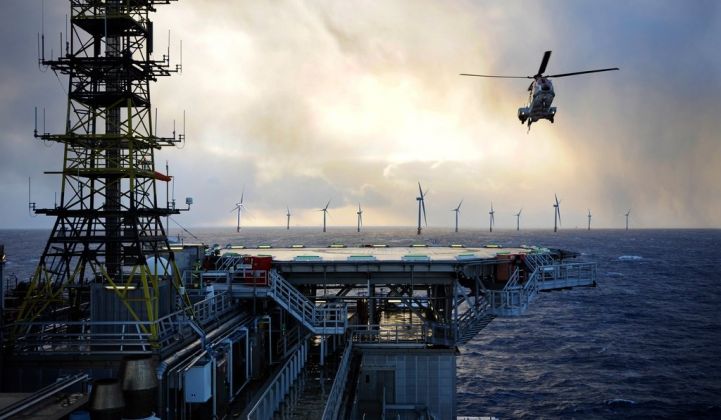The energy transition will be cheaper and faster with the full support of the oil and gas sector, but national oil companies, in particular, are falling behind, the IEA warned in a report compiled in tandem with the World Economic Forum and presented at Davos 2020.
For all the talk of the energy transition, leading global oil and gas companies invested just $2.1 billion into solar, wind, biofuels and carbon-capture projects last year, amounting to a mere 0.8 percent of their overall capital expenditures, according to the IEA.
Total merger and acquisition activity or other investments into low-carbon companies — such as minigrid developers, EV infrastructure firms or energy storage providers — was under $2 billion last year from leading oil companies, the IEA said.
The IEA report echoes the call last week from the U.K. Oil and Gas Authority for the industry to accelerate its transition or risk losing its “social license.”
The oil industry faces "twin threats" in the forms of financial pressure and eroding social acceptability, the IEA said. "There are already signs of both, whether in financial markets or in the reflexive antipathy toward fossil fuels that is increasingly visible in the public debate, at least in parts of Europe and North America.”
The first step needs to be slashing operational emissions, the report says, especially from methane leaks and flaring. But greater involvement in low-carbon projects must happen as well.
“With their extensive know-how and deep pockets, oil and gas companies can play a crucial role in accelerating deployment of key renewable options such as offshore wind, while also enabling some key capital-intensive clean energy technologies — such as carbon capture, utilization and storage and hydrogen — to reach maturity,” said the IEA’s executive director Fatih Birol.
“Without the industry’s input, these technologies may simply not achieve the scale needed for them to move the dial on emissions,” Birol warned
European oil majors leading the way
Not all oil companies are moving at the same pace toward decarbonization. National oil companies, among them Saudi Aramco and China National Petroleum Corporation, as well as some owned by investors, like ExxonMobil, have been slow to embrace decarbonization.
In contrast, Shell, a relative leader, has committed to spending $2 billion to $3 billion a year from 2021 onward, up from its $1 billion to $2 billion today.
In November, Shell narrowly lost out to Mitsubishi in a €4.1 billion ($4.5 billion) deal for Dutch energy supplier Eneco. Buying Eneco would have smashed Shell's spending target for its New Energies division, indicating there's additional headroom for investments if the right opportunity presents itself.
Europe has seen more progress and a greater variety of low-carbon investments from oil companies compared to other parts of the world, the IEA says.
When it comes to renewables projects, solar is now the largest recipient of oil and gas investment, taking $1.1 billion last year.
On Monday, French oil major Total and its JV partner Marubeni emerged as the winners in the tender for an 800-megawatt solar project in Qatar. Total will own a 19.6 percent stake in the $500 million project. A consortium of Qatari state-owned companies will own 60 percent and the balance with Marubeni.
Meanwhile, BP is now a 50-50 partner in the solar developer Lightsource BP, which is on track to develop 10 gigawatts of solar by the end of 2023. Italy's Eni has a U.S. solar partnership with Falck Renewables and is also working on solar projects in Australia, Kazakhstan, Tunisia, Angola and more.
Shell and Equinor have both made sizable investments in offshore wind and have more projects in the pipeline. The pair has also made early moves into floating offshore wind technology and development. The deepwater projects will lend themselves to the oil and gas industry’s technical and engineering experience.




